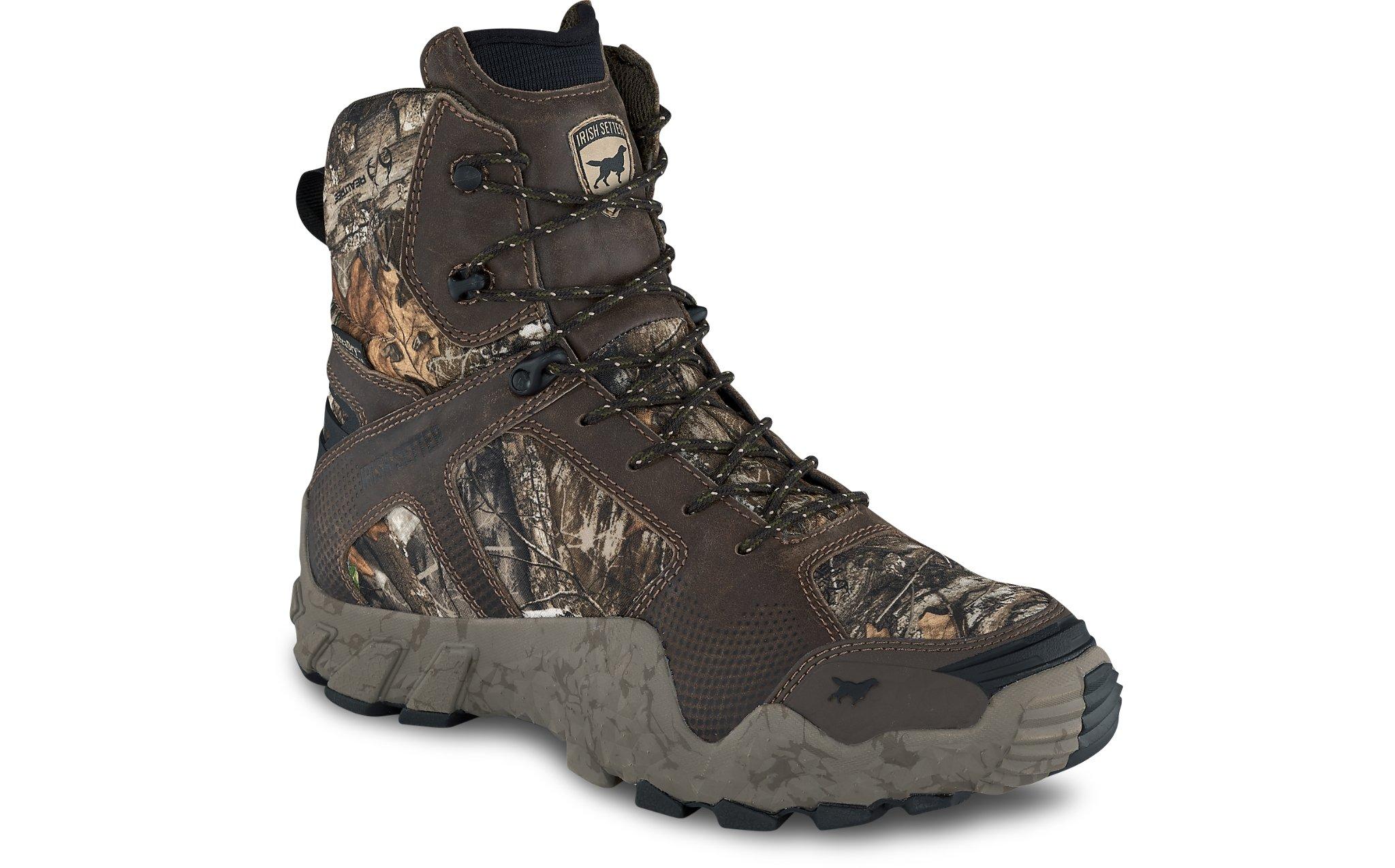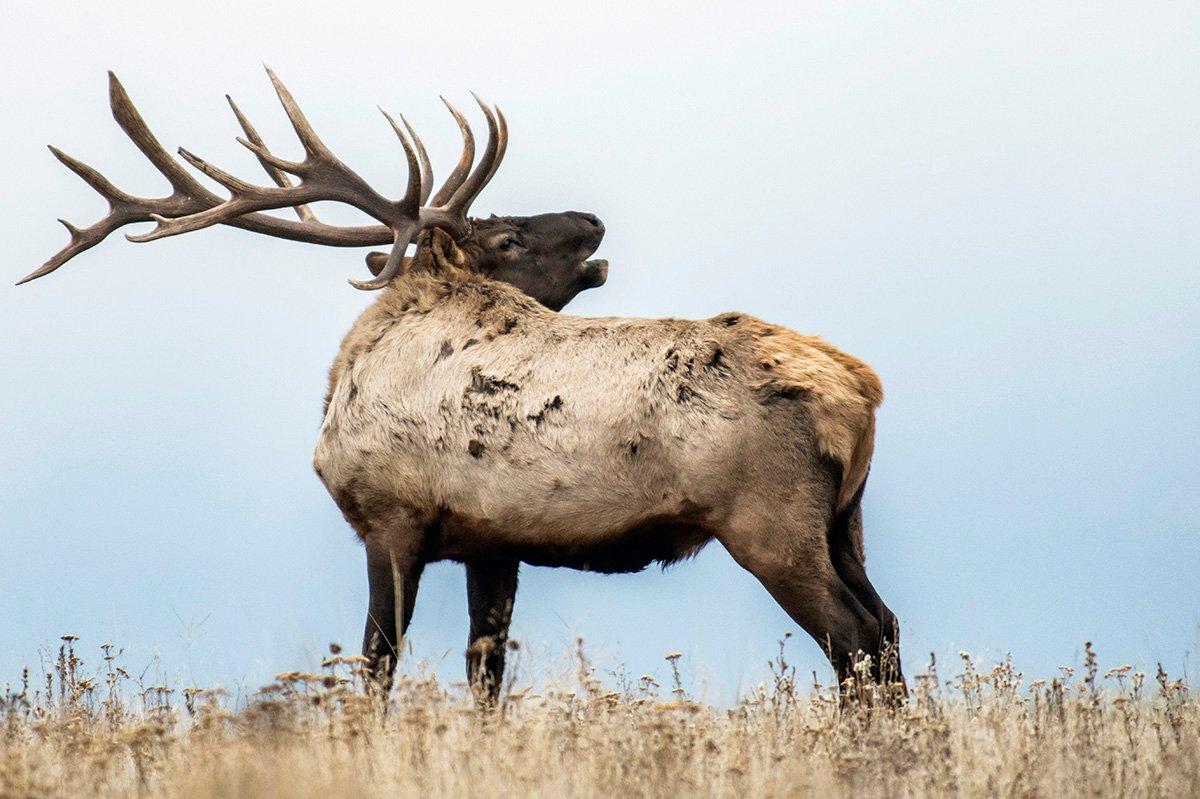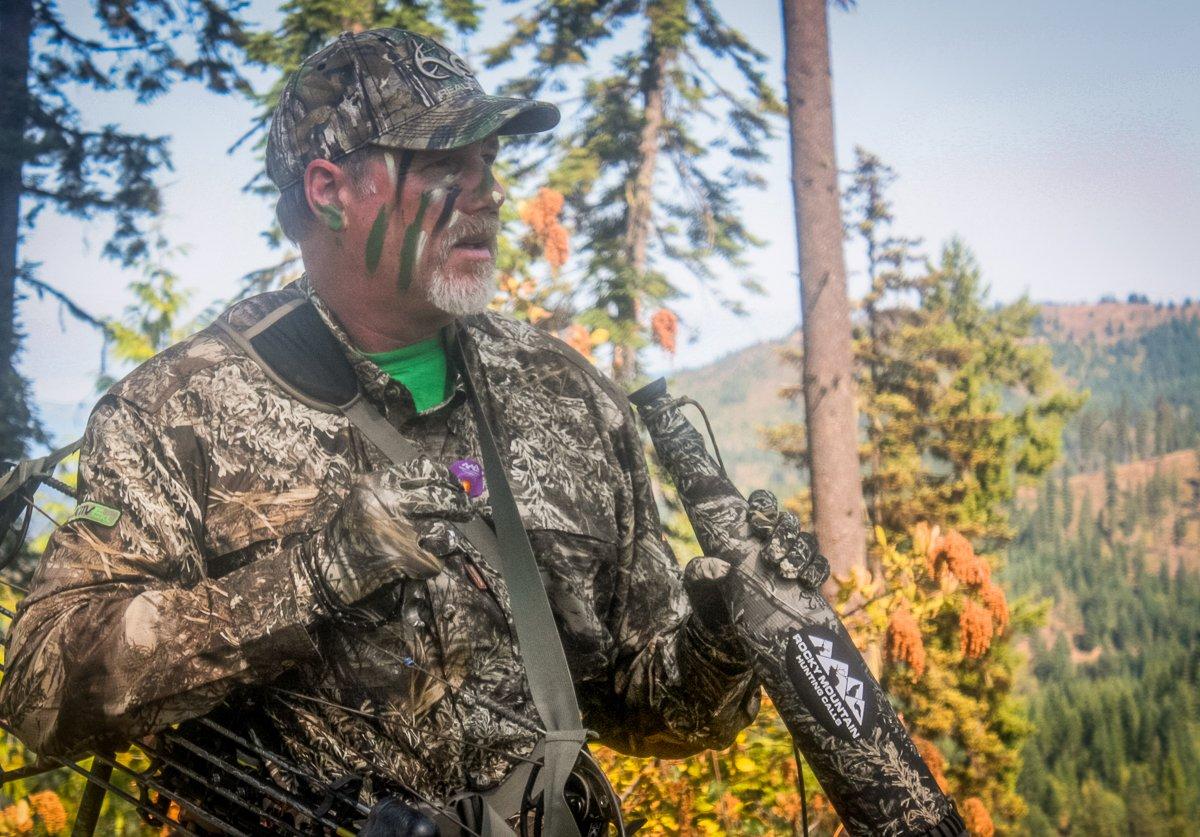Smart calling still works on today's pressured bulls, but it's rarely easy. These tricks will up your odds
When I began seriously bowhunting elk, in 1982, calls were laughably low tech, including coiled gas hoses and homemade PVC flutes. Yet in 1983, when I became a professional guide, I used these basic instruments to lure bulls into range of the compound-bow technology of the day — back when 40 yards was extreme. Many mature bulls fell for those silly whistles, and my clients filled their tags. By 1985, we'd made the revolutionary breakthrough of directing turkey-diaphragm vocalizations through lengths of vacuum hose. For several years, New Mexico's Gila bulls were suckers for aggressive bugles. This lasted awhile. My own 364-inch giant in 1988 was bugled in and skewered at 40 yards.
By the 1990s, tags were becoming more difficult to secure as elk fever swept the land and demand outpaced supply. Red-blooded hunters were watching VCR tapes showing processions of monster bulls trotting in to name-brand calls, and wanted in on the action. Elk calling went through a succession of newfangled bugles and cow calls as Western bulls quickly developed more discerning tastes. Over the 23 years I guided elk hunters, the calling game continually evolved.
But call manufacturers had product to sell, and hunting celebrities (who often had their own lines of calls to sell) kept the video kills rolling on exclusive private ranches. Joe Public continued to eat it up, despite dwindling calling success on workingmen's public lands. I slowly began to believe calling to elk was a great way to literally blow your chances at public-lands success, though I continued to carry calls. But I used them discriminately. Today, elk-calling success on public lands demands more careful approaches and an application of hard-earned experience.
Take Their Temperature
Calling to elk and to turkeys isn't all that different. For roosted gobblers subject to any degree of pressure, you'd be foolish to begin with aggressive, demanding yelps, cutts, and purrs. Bull elk are no different. Hit a bull with belligerent, grunting bugles or obnoxious, hyper cow calls right off, and the results are predictable. Yet this is exactly the approach many tyros take. Savvy elk hunters start conservatively, allowing bulls to tell them how to proceed.
After you offer squeaky, broken spike squeals, does a bull retort at once or continue randomly? Does he ignore the spike squeal but light up to a cow chirp? How about a more persistent series of cow calls? When you hit him with a casual I'm-over-here bugle, does he sound off, or shrink? What about a screaming I'm-gonna-kick-your-butt bugle?
The key is to patiently feel each bull out. You don't want to offer your full calling repertoire in the first 10 minutes. Think of it like wooing the opposite (human) sex: You ease into things on a first date, avoiding blurting out demands that the person be buried next to you someday.
It's a matter of degrees. If soft cow chirps or spike squeals shut a bull down, put your calls away. You're in for a difficult day. If the subtle stuff keeps him talking, but he clams up or fades when you get pushier, you've found the line of tolerance. When a bull matches the most aggressive calls, it's magical. Still, success is far from assured. In hard-hunted areas, you can likely credit the survival initiative. There are biological reasons besides that. Herd bulls, or subordinate bulls in tenuous possession of a knot of cows, have nothing to gain and everything to lose by picking a fight or leaving a harem to cut in a single cow.
The only time I feel it's prudent to blare out aggressive bugles up front is while attempting to coax locating bugles in the dark or on quiet mornings.
Consider Cow Calls Only
I know hugely successful elk hunters who lean heavily on cow calls, seldom producing bugles for fear of putting off timid bulls. In areas where bulls hear plenty of human calls, this isn't entirely off base. Even when pursuing tight-lipped bulls, though, I keep a bugle handy. There are habitats where bull-to-cow ratios are such that competition isn't a driving force — like attempting to rattle or grunt to whitetails in areas where does far outnumber bucks. Elk calls, after all, are most relevant during the September-to-early-October breeding season when bulls are seeking companionship. But where bugling is a turnoff, toting only cow calls can work on public lands.
The only time I feel it's prudent to blare out aggressive bugles up front is while attempting to coax locating bugles in the dark or on quiet mornings.
There are two basic types of cow calls: subtle social calls and aggressive breeding vocalizations. I produce random social cow calls while trekking through elk country, especially when thicker vegetation limits visibility; and on first contact with bugling bulls, to take their temperature. I've also called randy bulls right in with subtle calls, no further tricks required.
More aggressive cow calls can come into play as competition increases, say, a herd bull fending off several satellite bulls or a group of bulls attempting to wrangle a loose knot of unaccompanied cows. Seldom will you lure herd bulls away from harems, but desperate satellite bulls will drop in to investigate lusty cow calls. My highest-scoring bull, a 7x8 public-lands herd boss, swung into range entirely due to such persuasion (more on that below).
Understand Why Bulls Bugle
That said, bugles can produce results in modern elk woods, but they require a higher degree of insight and the ability to recognize when systems are go. Bugles serve some major biological purposes: Boss bulls use them to keep loose-knit or moving harems intact, or to warn subordinate bulls to keep their distance. Lone bulls bugle to troll for available cows. Bugles can also serve as belligerent challenges, indicating sexual frustration (satellite bulls on the outside looking in) or rage (bulls separated from or kicked off hard-earned harems). Subtle differences can prove difficult to read.
Gathering bugles are least beneficial to callers, though they can keep you in touch for run-and-gun dogging — another subject entirely. Pressure herd bulls that are issuing gathering bugles, and they'll generally grow silent and put space between you and the herd. Warning bugles are useful only when dealing with bulls tending a smallish group of unwilling cows. I've lured such bulls into range by teasing them with mocking bugles while carefully moving in, causing cows to break toward my calls. The target bull has no choice but to dispute possession. This works best in thicker cover where elk have settled in late in the morning.
You can lure trolling bulls with a mix of cow calls and high-pitched bugles (denoting immaturity) or by inviting a challenge for dominance. The challenging bull — especially when sexually frustrated or enraged — represents elk calling's highest-odds target. As any once-upon-a-time-teenage-boy can relate, hormones and fury cloud judgment and encourage rash behavior. It's safe to say 80% of my bugling success has involved being in the right place at the right time to take advantage.
Mingle With a Herd
One of my favorite ploys is what I like to call herd mingling. This requires a combination of stealth and calling acumen. The right boot makes all the difference. You need a delicate balance of stealthy tread and ample ankle support — something like Irish Setter's feathery, waterproof Vaprtrek 2.0 in Realtree Edge. Your best case involves agitated or sexually primed herds of highly vocal elk, situations you sometimes wait an entire season for. A couple of cows slipping into estrus, two smaller herds merging to create dominance issues, a group of upstart bulls crashing the party — any of these can spark mass pandemonium and give hunters an entrance.
Wind is your biggest adversary here; the smallest whiff of human scent will send even addled herds packing. Initial calls include imitations of excited calves and squealy spikes. After becoming accepted as part of the herd, switch to excitable cows or herd bulls. Once you need to start dodging cows and satellite bulls, begin to mock dominant bulls, mirroring their tone and intensity. This is often enough to frustrate boss bulls into confronting the annoyance.
My highest-scoring bull, the 7x8, 386-inch behemoth hinted at earlier, gave me a shot only because I'd become pinned by a pair of vocal cows after dogging the herd for an hour. With shooting light waning, I began desperately cow calling, causing them to hang up and then move in my direction. The impatient herd bull swung to cut these cows back into the herd. I continued calling desperately. When he swung over to cut me in, I was presented with the longish shot.
One of the most dramatic encounters I can recall occurred because a client and I inadvertently cut a herd bull off from his harem. We'd dogged the herd since daybreak without seeming to close the gap, but late in the morning we bumped his cows from their beds. All the thundering hooves indicated the morning was finished — until the bull bugled from upwind. I thought What the heck? and offered a challenging bugle. The bull came on a dead run to my continued bugling. My client shot that 350ish bull at a distance better measured in feet than yards.
Stake Out a Route
I discovered a strategy that I call route staking while bowhunting New Mexico elk during a spate of unseasonably hot temperatures. The ploy has also proved viable on northern Idaho's tight-lipped elk. The New Mexico bulls are reluctant talkers due to abundant wolf packs that home in on bugling like guided missiles. One morning, the heat had truncated hunting hours, yet I was surrounded by fresh sign. I began blowing elk calls for no particular reason — practicing, I suppose. After a half hour I decided to head out, taking only a few steps before meeting a wide-eyed 6x6 bull, much to my chagrin.
Route staking often encourages silent responses. This isn't exactly random calling. Before setting up, first locate a ridge or point littered with sign or stinking of elk. Your calls should mirror an intimate herd going about its daily business — a random series of soft cow/calf chirps mingled with muted bull bugles or stand-alone grunts. More recently I've added antler rattling to the mix, tickling some 5x5 antlers scavenged from a winterkill to mimic two bulls shoving each other without malice.

What you're anticipating is the curious swingby. As such, set up where a steep drop or cliff eliminates downwind approaches. Give elk time to slip in cautiously (up to 45 minutes), and stick to nonthreatening social calls. Bulls often sound out as they move closer, but don't count on it. This is obviously a persistence game. Like predator calling, not every set results in success, but the more you try the better your odds become. Route staking is especially productive on known travel ways, such as between bedding and feeding habitats.
In conclusion, I'd never recommend that the modern elk hunter depend solely on calling for public-land success. Filling bull tags in today's harder-hunted habitats requires a more well-rounded hunter. Yes, calling is still very much part of that game plan (some would argue the finest part), but only if you go about it smartly, considering all extenuating factors and applying a careful plan. Make sure you're truly talking their language, and not presenting yourself as the crazy drunk at a party screaming gibberish and rattling everyone involved.










